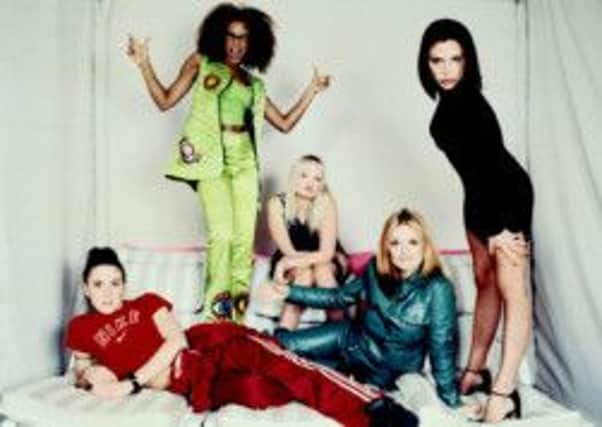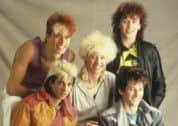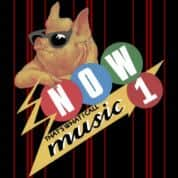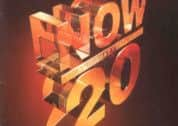Now That’s What I Call Music: Then and now


IMAGINE for a moment that your only experience of pop music was via Now That’s What I Call Music compilations. Your listening life would begin exactly 30 years ago with You Can’t Hurry Love by Phil Collins. The most important pop star of 1983, you’d conclude, was Limahl, who had three songs on the first Now album (one solo, two with Kajagoogoo).
You would discover hip-hop mainly through novelty hits by the Fat Boys and Morris Minor and the Majors. You wouldn’t get to listen to Depeche Mode until 1990 (although you would hear an awful lot of Erasure), or New Order until 1994, 11 years after Blue Monday. You would have no clue who the Stone Roses or Nirvana were, or be more than dimly aware of rave, house, techno or drum and bass, but you’d have listened to an awful lot of T’Pau.
Advertisement
Hide AdIn 1991, you’d have the disorientating experience of listening to Driven By You by Brian May a few minutes after hearing Queen’s Bohemian Rhapsody for the first time. Around 1999, you might begin to wonder what the hell had happened to pop music, having endured the following tortuous sequence on disc one of Now 42: Boyzone, Steps, Steps again (with Tina Cousins, Cleopatra, B*Witched and Billie Piper), Spice Girls, Honeyz, Billie Piper again, The Corrs, Emilia, Tina Cousins again, Vengaboys.


I could go on, but you probably wouldn’t thank me. Suffice to say, the Now series often paints a weirdly skewed picture of the last 30 years of pop music. This might seem obvious; all compilations tell only part of the story. But it’s worth being pedantic about, given Now’s status as the dominant and definitive pop compilation series. Its biggest rival, The Hits series, spluttered to a halt in 2006. Now has outlived both Top Of The Pops and virtually all the record stores that once sold it. Our Price, Virgin and Tower are all gone, with only HMV limping on.
Like all these institutions, Now seems emblematic of a fading era in pop music. It was, famously, dreamed up by the heads of EMI and Virgin in a meeting on Richard Branson’s boat. Yet its most recent release, Now 84, was the fastest selling album so far this year. In total the series has now sold more than 100 million albums, and celebrates its 30th birthday this month with head held high and a new compilation of compilations, Now That’s What I Call 30 Years.
I am a child of Now as much as I am a child of Thatcher, having discovered pop music around 1983. From my own probably skewed perspective, I am tempted to argue that Now occupies a similar place in pop culture to Top Of The Pops, Only Fools And Horses and Doctor Who – a common point of reference, a sort of cultural shorthand, at a time when everyone seemed to watch the same TV shows on the same night, and heard songs for the first time at the same time. It feels like an anomaly in this more fragmented age, when compilations are increasingly tailored to more specific tastes – Ministry of Sound albums for the clubbers, Rough Trade compilations for the hipsters, Back To Mine for those seeking something more personal and curated. Now had a simpler strategy than any of these albums. Content: music that was popular. Target audience: everybody who bought it.
As a result, some of its tracklists are bonkers. Now 10, from 1987, has Pump Up The Volume by MARRS followed by Hue and Cry’s Labour Of Love, and Crockett’s Theme from Miami Vice followed by Nina Simone singing My Baby Just Cares For Me (one of many ad-inspired re-releases from that time). There’s something quite endearing about that diversity, echoed today only by the appealingly unpredictable and breezily uncool Later With Jools Holland.


But Now wasn’t being deliberately eclectic or postmodern. It was just reflecting what people were buying at any given time. Looking back over its tracklists is endlessly fascinating for a pop geek like me, as the sort of hits everyone remembers rub up against oddities like Furniture’s Brilliant Mind, Sparks’ When Do I Get To Sing My Way, and Karel Fialka’s Hey Matthew, and you find yourself constantly re-evaluating your ideas about what was actually popular in any particular year. Now 32, released in 1995, is as full of Britpop hits as you’d expect – Pulp, Blur, Oasis, McAlmont and Butler – but it kicks off with Heaven For Everyone by Queen (still churning out records four years after their singer died) and finishes with Runaway by E’voke, a song I have no memory of at all. Disc two opens with Coolio, Shaggy, N-Trance and a remix of Donna Summer’s I Feel Love. The ebb and flow of that year is neatly illustrated by the fact that Lucky by Radiohead – a musical leap forward for that band, and the first sign of what to expect from Ok Computer – appears on the same album as Goldie’s Inner City Life, a track which represents the beginnings of the kind of darker electronic dance music which would later shape Radiohead’s sound, particularly on The King Of Limbs. Not that anyone could have seen this coming in 1995.
Advertisement
Hide AdOn 1991’s Now 20, meanwhile, U2’s The Fly is immediately followed by the Pet Shop Boys’ medley of U2’s Where The Streets Have No Name and Andy Williams’ Can’t Take My Eyes Off You – a sly joke by whoever was compiling the album. In blending U2 and Williams, the Pet Shop Boys were having a dig at what they saw as U2’s rockist, very 1980s pomp and bombast, the way their Rattle And Hum album, in particular, seemed to aspire to place them in a tradition of authentic, timeless roots music. No, the Pet Shop Boys single said, U2 are disposable contemporary pop like everyone else, Andy Williams included. These two singles sharing space on a compilation called Now rather proves that point. Years later, Andy Williams, unfashionable in 1991, became curiously cool again, thanks to the likes of Noel Gallagher and the Divine Comedy’s Neil Hannon championing old “easy listening” records. Later still, U2 released an album with the slightly self-conscious title of Pop. The barriers between rock and pop were being eroded, just as the ones between pop and indie were, thanks to the increasing commercial ambition of labels like Creation and Domino. Everyone, in a sense, is now a child of Now, consciously operating in the same marketplace and by the same rules.
While listening to Now’s back catalogue uncovers lots of these kinds of histories, if you have any more than a casual interest in pop music the albums still make for a rotten time capsule. Just one song by the Smiths, and nothing by the Cocteau Twins? This is what happens when you measure success only in top 40 singles.
Advertisement
Hide AdAs a teenager, admittedly, I used to do pretty much that, making my own Now compilations by recording the Radio One chart show on to a C90 cassette and desperately trying to hit the pause button just before Bruno Brookes interrupted the final seconds of the song. I was struck this week by the fact that, despite believing I still had a decent working knowledge of pop music, when I got to Now 70 I suddenly had no idea who a lot of people were. Who the hell was Scooter? Or Fragma? Or Gabriella Cilmi? Or September? This, I realised, marked the point when I finally stopped paying much attention to the top 40.


This was partly age, but evidently it wasn’t just me, given the demise of Top Of The Pops two years earlier, and the conspicuous lack of enthusiasm for filling the void. It seems strange that the Now format continues to prosper so long after a programme that once represented the peak of pop star ambition symbolically stumbled. Who needs Now, when you have YouTube Spotify, and Last.FM playlists? Who is it for? The most obvious answer would appear to be: the casual listener, people whose purchasing habits aren’t mirrored in the decline of album or even single sales, because they never bought those things that much in the first place. If you’re really into pop music, there are now hundreds of ways to seek it out. If you just have a passing interest in what it sounds like, now, then Now is still the best one-stop shop available.
• Now That’s What I Call 30 Years is released on 30 May